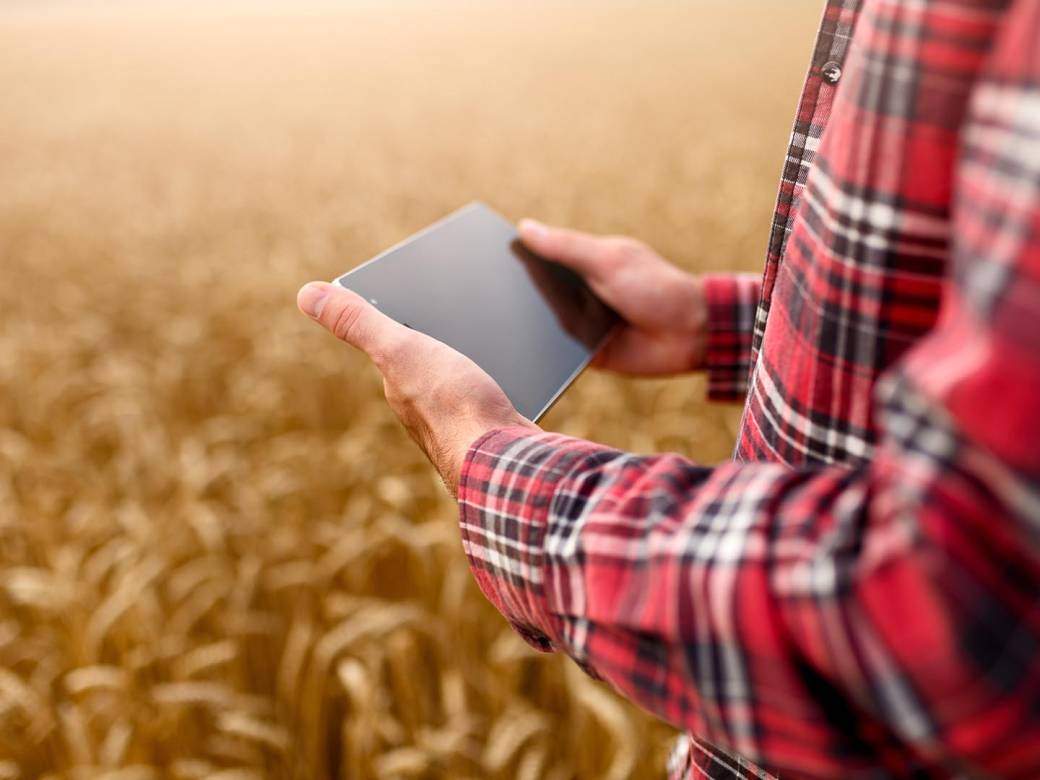Agriculture and AI: improving food security for the future
28 January, 2019 Reading: 4:27 mins
A major 2016 McKinsey report ranked the ‘Agriculture and hunting’ sector the least-digitised of all sectors, 22nd of 22 behind all other sectors including construction. Clearly advances in all kinds of technology – from sensors and drones to new ways markets aggregate and do deals – can help the agri sector as a whole to achieving greater profits and higher productivity… Here at KISS we were very surprised at this ranking given the advancements in drone technology and data analysis that we’ve witnessed in the industry in recent years. So we were intrigued to hear about a recent ‘AI and Agri Frenzy’ and investigated some of the ideas presented.

A major 2016 McKinsey report ranked the ‘Agriculture and hunting’ sector the least-digitised of all sectors, 22nd of 22 behind all other sectors including construction. Clearly advances in all kinds of technology – from sensors and drones to new ways markets aggregate and do deals – can help the agri sector as a whole to achieving greater profits and higher productivity… Here at KISS we were very surprised at this ranking given the advancements in drone technology and data analysis that we’ve witnessed in the industry in recent years. So we were intrigued to hear about a recent ‘AI and Agri Frenzy’ and investigated some of the ideas presented.
Real-time sensing around the world
Dutch company 30MHz’s solution uses wireless sensors for temperature; moisture; wind speed and direction; and cloud-based analytics that work on any screen. It claims to be able to make improvements across a range of primary production set-ups in smaller-area and indoor farming applications. The company says its kit can improve germination in ornamental plants and reduce pesticide use in soft fruit. It also offers much more accurate details on dewpoints and surface temperatures through the day to enable more accurate misting, reducing the risk of wet leaf and waterborne disease. This also lowers plant stress due to better temperature and sun management throughout the day. An impressive-looking “microclimate sensor” at plant level helps detect very local variation in conditions along the length of a moving greenhouse.
Successful so far with more labour-intensive (usually indoor) crops, the 30MHz kit seems less suited to large-scale arable uses, although the company has sold basic moisture sensing kits to help with irrigation monitoring for outdoor crops like potatoes and onions. Its sensors – currently inside grain and bulb stores, vegetable packing sheds and stores, and trucks – are more broad in application, allowing anyone across the supply chain to monitor things like temperature and get instant alerts if there is a variation outside agreed parameters.
With a basic setup costing under £2,000, 30MHz claims rapid ROI and low initial outlay. For example, one Dutch client reduced sun-scald in peppers by 40 per cent using its infrared surface-temperature sensor, providing more than 100 per cent ROI within a year. Through more accurate temperature management, the same client reduced his gas-heating bill. UK customers it has garnered within its first year include some large operators: Berryworld, herb grower Vitacress and Lamingo.
Potato growers Greenvale are working with Sainsbury’s to provide better data on potato crops as they are harvested and shipped to store – part of improvements to Sainsbury’s supply-chain management. Berryworld’s UK staff can now track real-time conditions in its greenhouses in the UK, the Netherlands and Australia, replacing spreadsheets that were often days or even weeks old.
Robot swarms to drive the future
Meanwhile Harper Adams University has been looking at a robotic arable future. The drive to lower labour costs has pushed farmers to use ever-larger machinery. Not only does this make it hard to prevent more compaction and soil movement, but, more importantly, it is probably preventing farms reaching maximum yield because it is still hard to precision-farm at less than small-field scale. The Harper-Adams team offer a solution though: small swarms of smart agri robots, probably run by contractors and designed to work on specific crops, which would be able to be kept in a truck throughout the season and quickly released to analyse and manage a crop one plant at a time.
While still theoretical we can see the benefits here – higher yield, minimal wasted land, minimal compaction, soil movement cut down over a hundredfold, and individual-plant husbandry done rapidly across large areas. Skilled supervision would still be needed to manage the “swarm”, creating new types of specialist jobs. This may seems costly – but remember, it ought to mean higher per-hectare yield and should mean much less outlay on high-end tractors and other large capital equipment.
And the Harper-Adams team do have form on fully automated farming with small machines – they refer to their 2017 Hands Free Hectare trial. The trial saw the team successfully drill, manage and harvest 4.5 tons of barley using remotely driven small machinery (drones and other low-cost kit bolted on to quite modest equipment) with no operators on the ground throughout the year.
So agriculture may be the only sector getting the lowest score in all nine work areas from ‘digital spending on workers’ to ‘market making’ in the 2016 McKinsey report on the pace of digitisation in different industries. But we think maybe the McKinsey researchers need to get out in the fields a bit more…